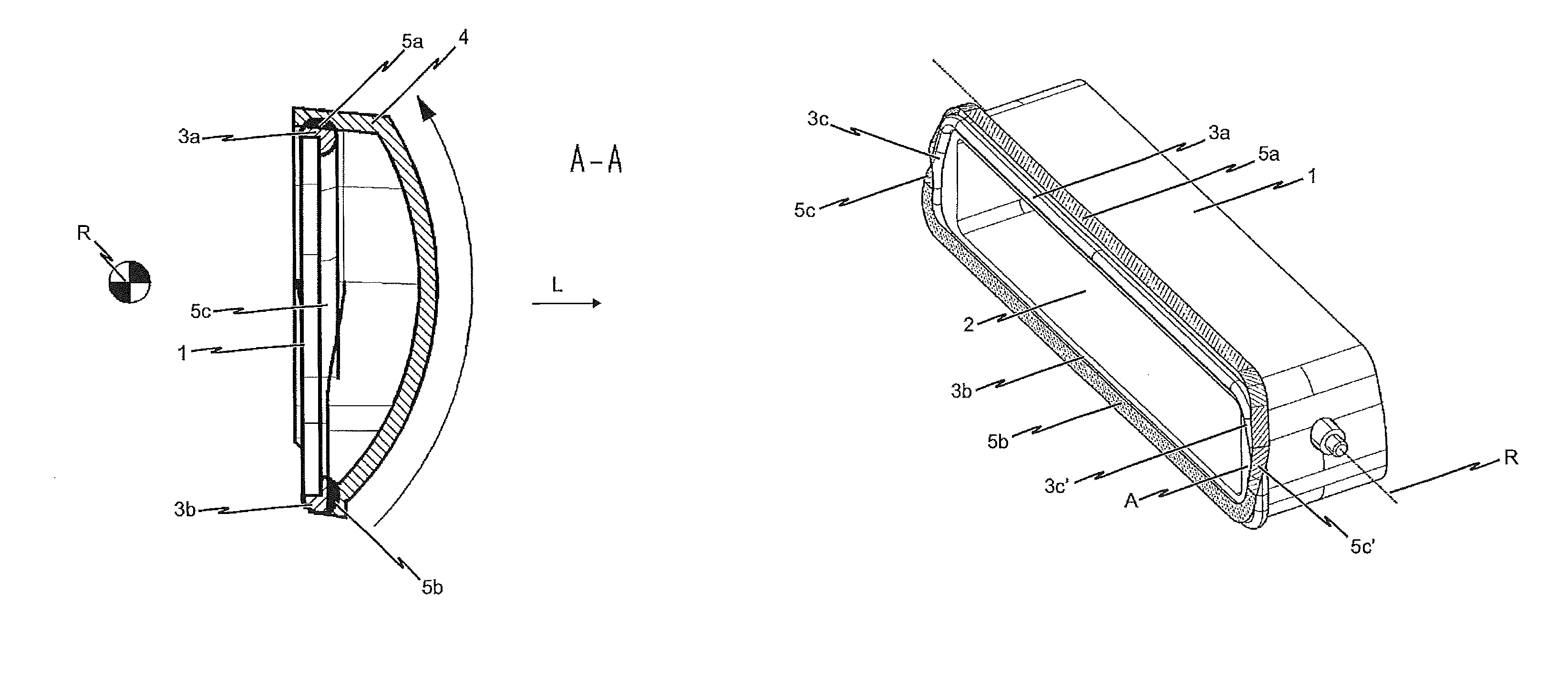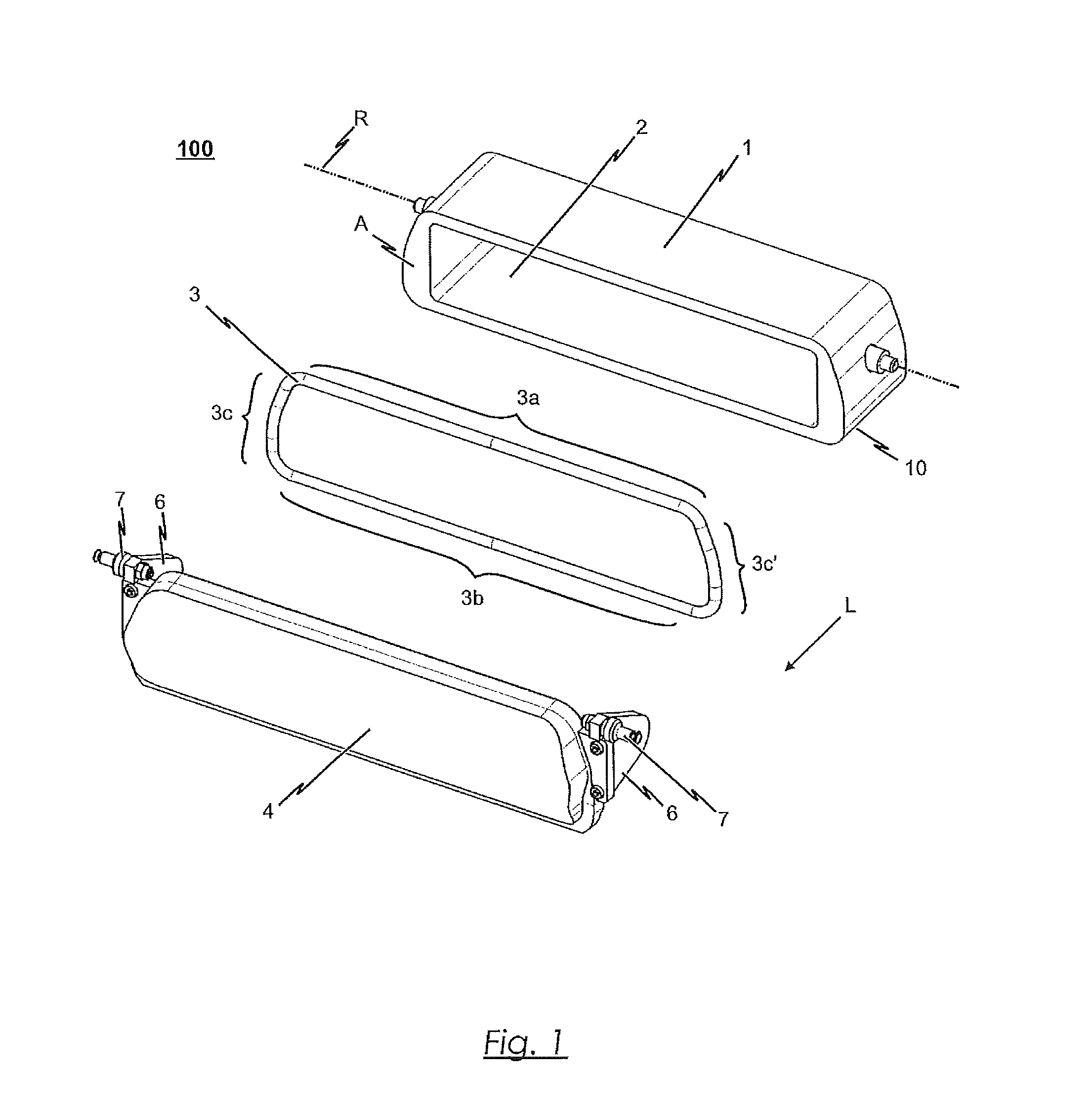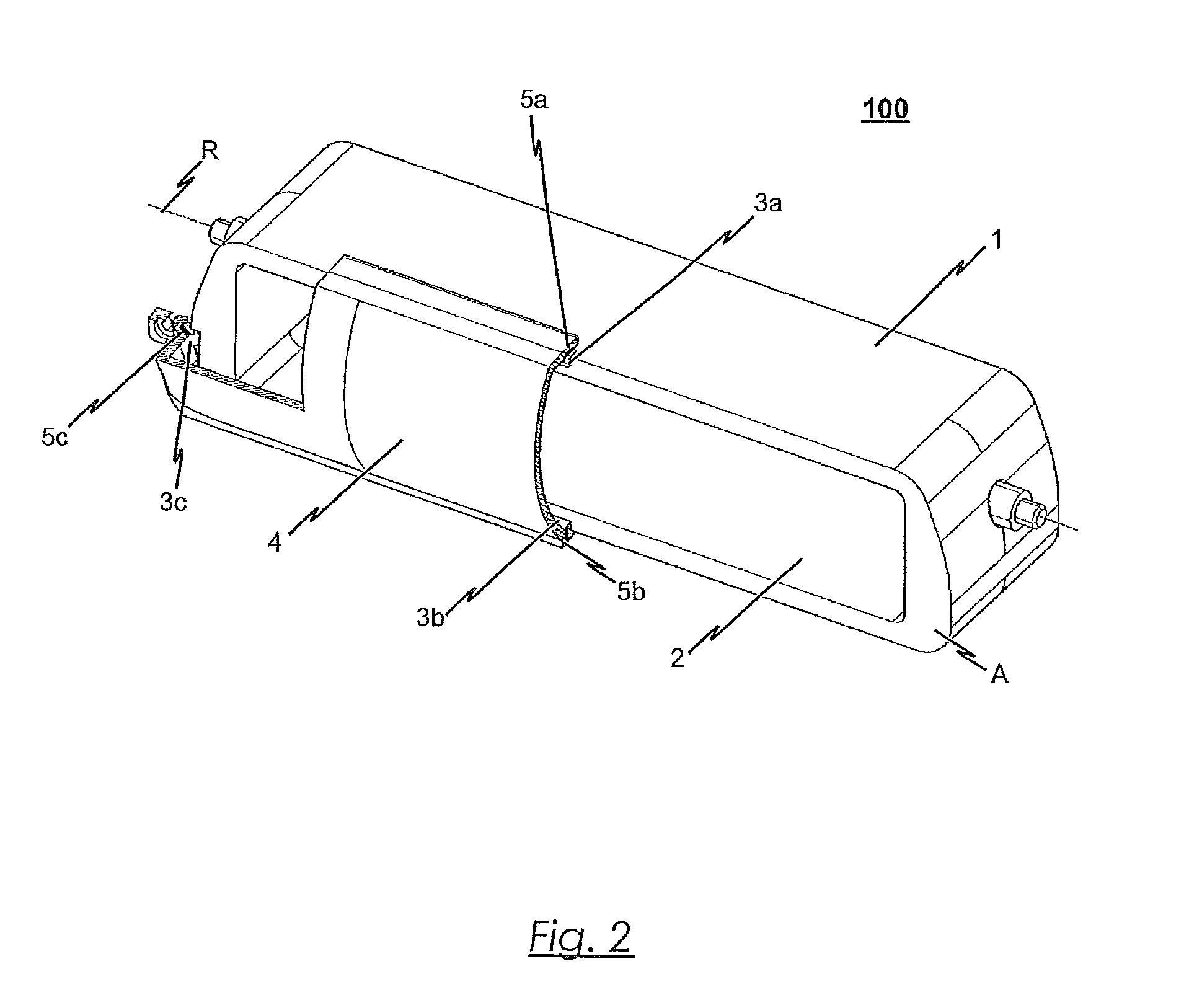Electrical contact coupling for a track-borne vehicle, particularly a railway vehicle
a technology for electric contact coupling and track-borne vehicles, which is applied in the direction of coupling contact members, coupling device connections, transportation and packaging, etc., can solve the problems of reducing surface resistance, lateral sealing gaps between the protective flap and the coupling housing, and reducing maintenance costs. , to achieve the effect of reducing maintenance expenditures and ensuring the seal
- Summary
- Abstract
- Description
- Claims
- Application Information
AI Technical Summary
Benefits of technology
Problems solved by technology
Method used
Image
Examples
Embodiment Construction
[0037]The electrical contact coupling 100 depicted as an embodiment in the drawings is designed to be fixable to a track-borne vehicle, a railway vehicle in particular, such that the housing end face A of the electrical contact coupling 100 faces the vehicle's coupling direction L and lies in coupling plane M or can be brought into coupling plane M. The electrical contact coupling 100 thereby serves, in conjunction with an electrical contact coupling 100′ configured complementary thereto (see FIG. 6), to establish a connection between electrical lines and / or signal lines between two neighboring vehicles, in particular railway vehicles.
[0038]As can be seen from the exploded view of FIG. 1, the electrical contact coupling 100 according to the depicted embodiment exhibits a trapezoidal coupling housing 1, on the bottom or base 10 (FIG. 6) of which guide bushings (not shown) can be arranged for displaceably mounting the coupling housing 1 in coupling direction L to a vehicle, in particu...
PUM
 Login to View More
Login to View More Abstract
Description
Claims
Application Information
 Login to View More
Login to View More - R&D
- Intellectual Property
- Life Sciences
- Materials
- Tech Scout
- Unparalleled Data Quality
- Higher Quality Content
- 60% Fewer Hallucinations
Browse by: Latest US Patents, China's latest patents, Technical Efficacy Thesaurus, Application Domain, Technology Topic, Popular Technical Reports.
© 2025 PatSnap. All rights reserved.Legal|Privacy policy|Modern Slavery Act Transparency Statement|Sitemap|About US| Contact US: help@patsnap.com



